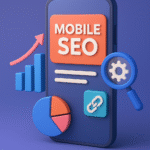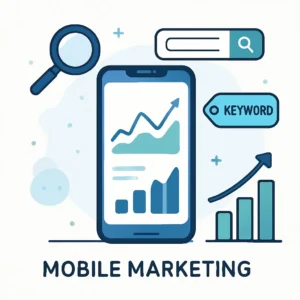

Sales Funnel: Definition, Stages & Template
In the world of digital marketing, the concept of a sales funnel has become fundamental to understanding and enhancing the customer journey. A sales funnel represents the step-by-step process a potential customer goes through, from the initial awareness of a brand to making a final purchase (or even beyond, to retention and advocacy). By optimizing each stage of this funnel, businesses can streamline customer experiences, increase conversion rates, and ultimately maximize revenue. This article will explore the stages of a sales funnel, the importance of each, and strategies to optimize your sales funnel for the best results.
Table of Contents
ToggleUnderstanding the Sales Funnel Stages
Sales funnels can be divided into several stages, which may vary slightly depending on the business model. Generally, a sales funnel has four main stages:
Awareness: At this stage, potential customers become aware of your product or service. They may come across your brand through various channels, such as social media, search engines, or advertisements. The primary goal here is to capture attention and pique interest.
Interest: Once aware, the next step is building interest. This stage is crucial, as it’s where potential customers begin evaluating your offerings and comparing them with competitors. Here, it’s essential to present your brand as trustworthy and valuable.
Decision: By this stage, potential customers have narrowed down their options and are close to making a purchase. Your goal here is to provide compelling reasons why they should choose your product or service over others. This might involve special offers, testimonials, case studies, or demos.
Action: The final stage is where the prospect makes a purchase. However, the funnel doesn’t end here. After the purchase, it’s essential to continue engaging the customer to encourage future purchases and build brand loyalty. This is often referred to as the retention or loyalty stage.
Optimizing Each Stage of the Sales Funnel
To maximize the effectiveness of your sales funnel, you must tailor strategies to optimize each stage. Below are actionable tips for each stage to help convert prospects at a higher rate and reduce drop-offs.
1. Awareness Stage Optimization
The Awareness stage is about expanding reach and visibility. Here are a few optimization strategies for this stage:
Leverage Social Media Ads: Social media platforms offer robust targeting options to ensure your ads reach the right audience. Facebook, Instagram, LinkedIn, and Twitter ads can be optimized to target specific demographics and interests.
Content Marketing: Publish valuable and relevant content, such as blog posts, videos, and infographics. This will help position your brand as an industry leader and attract organic traffic.
SEO Optimization: Enhance your website and content with relevant keywords to improve organic search rankings. Targeting search intent keywords that align with your customers’ pain points can draw high-quality traffic to your website.
2. Interest Stage Optimization
At the Interest stage, potential customers are considering your brand. Your goal here is to educate them further and foster trust:
Email Marketing: Use email marketing to nurture leads and provide value. Create personalized email sequences that gradually introduce the benefits of your product or service.
Retargeting Ads: Show targeted ads to people who have previously engaged with your content or visited your website. Retargeting is effective in reminding potential customers of your offerings and encouraging further exploration.
Content Upgrades and Lead Magnets: Offer valuable resources, such as eBooks, whitepapers, or guides, in exchange for contact information. This way, you can build a list of engaged leads who are interested in your product.
3. Decision Stage Optimization
This is a critical stage where customers are considering whether to buy from you. Make it easy for them to say yes with these strategies:
Social Proof and Testimonials: Use customer reviews, testimonials, and case studies to demonstrate your credibility. People are more likely to trust a brand that others recommend.
Clear and Compelling Calls-to-Action (CTAs): Your CTAs should be straightforward and encourage immediate action. Avoid generic phrases like “Learn More” and use CTAs that highlight specific benefits, such as “Start Your Free Trial” or “Get Instant Access.”
Offer Limited-Time Discounts or Bonuses: Creating a sense of urgency with time-limited offers can encourage quicker decisions. Flash sales or limited-time bonuses add an extra incentive to purchase.
4. Action and Retention Stage Optimization
The journey doesn’t end once the customer makes a purchase. Keeping them engaged for future purchases is essential to long-term growth:
Onboarding and Follow-up: After a purchase, a well-crafted onboarding experience helps customers feel confident in their decision. Offer tutorials, guides, and access to customer support to create a positive experience.
Loyalty Programs and Referral Bonuses: Rewarding customers for repeat purchases or referrals not only encourages brand loyalty but also helps expand your customer base through word-of-mouth.
Email Segmentation and Post-Purchase Follow-up: Send post-purchase emails that encourage feedback, recommend additional products, or offer special discounts to keep customers engaged with your brand.
Measuring Funnel Performance with Metrics
Tracking the right metrics is key to understanding how your sales funnel performs. Here are essential metrics for each funnel stage:
Awareness Stage: Track website visits, social media engagement, and reach. Metrics like impressions, click-through rates (CTR), and website traffic can indicate how well you’re capturing attention.
Interest Stage: Measure engagement metrics, such as time spent on-site, bounce rate, and content downloads. These metrics show if your content and messaging are resonating with your audience.
Decision Stage: Monitor conversion rate, cart abandonment rate, and click-through rates on CTAs. These metrics help you identify any friction points preventing customers from converting.
Action and Retention Stage: Track repeat purchase rates, customer lifetime value (CLTV), and customer satisfaction scores. These metrics are vital for understanding the effectiveness of your retention efforts.
Tools to Help Optimize Your Sales Funnel
Several tools can assist you in analyzing and optimizing your sales funnel:
Google Analytics: Provides in-depth data on website traffic, user behavior, and conversion paths, enabling you to make data-driven decisions.
CRM Software (e.g., HubSpot, Salesforce): CRMs allow you to manage customer data, segment audiences, and track leads throughout the funnel stages.
Email Marketing Platforms (e.g., Mailchimp, ActiveCampaign): Email platforms offer automation, segmentation, and personalization features that are ideal for nurturing leads.
Heatmaps and A/B Testing Tools (e.g., Hotjar, Optimizely): These tools provide insights into user behavior on your website and allow you to experiment with different layouts and CTAs for optimization.
Common Pitfalls to Avoid in Sales Funnel Optimization
While optimizing a sales funnel can greatly benefit your business, avoid these common mistakes:
Ignoring Mobile Users: Ensure your website, landing pages, and emails are mobile-friendly. A significant portion of traffic comes from mobile devices, and a poor mobile experience can lead to lost conversions.
Focusing Too Much on One Stage: While some stages may require more attention, an effective funnel optimizes each stage. Neglecting any part of the funnel can cause drop-offs.
Not Testing Enough: Regular testing and adjustments are essential for optimization. Conduct A/B tests on landing pages, CTAs, and email copy to find what resonates best with your audience.






















Post Comment